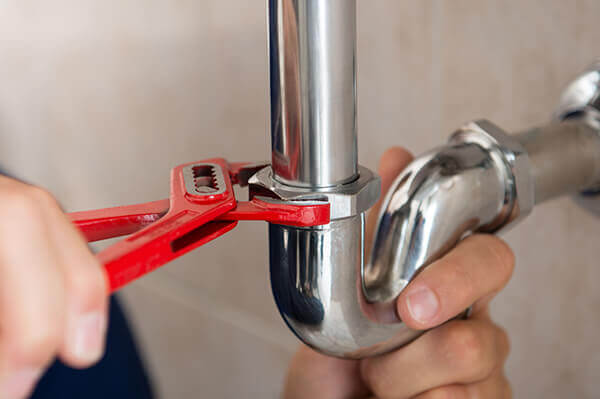What to Do If Your AC Starts Growing Mold
The presence of mold in your HVAC system can significantly reduce air quality in and around your home, particularly if members of your household suffer from allergies. The consequences of long-term mold exposure go way beyond mere sniffling and sneezing. Medical research reports that molds can cause throat irritation, wheezing, coughing, eye and skin irritation, and blocked nasal passages. Those with mold allergies may have even more severe reactions, and those with auto-immune conditions and chronic lung infections are putting their health at risk by continuing to ignore the signs of mold growth.
A Potentially Deadly Combination
While the growth of mold anywhere in your house can present health challenges, the function of your air conditioner in combination with mold growth is even more dangerous than mold found in your bathroom or kitchen. The function of an air conditioner is to circulate cool air throughout your home. If mold is allowed to grow and build up inside components of your HVAC system and ductwork, it could potentially impact your entire house. Mold spores are spread through your entire system and into rooms of your house, creating a widespread problem that causes you to inhale these toxic particulates. Even as you sleep, the consequences of breathing in mold can significantly and negatively impact your health.
Consequences of Mold Exposure
Long-term exposure to mold in your home may result in any of the following symptoms:
- Watery eyes
- Runny nose
- Sneezing
- Itching
- Wheezing and coughing
- Difficulty breathing
- Headache
- Fatigue
More serious health complications arise from repeated exposure. If you notice any of the above symptoms that cannot be attributed to recent illness, it’s a good idea to have your air conditioner inspected for possible mold growth.
How Mold Develops In Your Air Conditioner
It is nearly impossible to get rid of all mold spores in your house. Even if you were successful in cleaning your indoor environment, every time you opened a door or window you would be at risk of letting more mold in. As spores grow into mold, more spores are released. It is these high concentrations of spores that cause mold-related health problems. Preventing issues starts with eliminating the growth of mold at its source.
Mold needs a food source and moisture to grow and thrive. This moisture comes from your air conditioner’s high humidity levels found in both evaporator and condenser coils. If your unit is not properly draining, excess condensation will build up inside and around these components, becoming a breeding ground for toxic mold growth.
If your components are cleaned and checked regularly, it is unlikely that you’ll develop excessive mold growth in your air conditioner. Styrofoam channels and sheet metal ductwork do not usually offer mold its needed food source to thrive, but dust and particulates can quickly build up in your system, giving it a foothold for growth.
Getting Rid of Mold
Cleaning up mold inside an air conditioning unit is a delicate process that is best left to professionals. Proper cleaning procedures must be followed to prevent the spread of spores and exposure to toxins that may be harmful to one’s health.
Why Professional Mold Removal Is Necessary
Mold is everywhere. It is present in most buildings and even in the air that we breathe. We are equipped to handle a certain amount of exposure without experiencing adverse health effects. If your air conditioning system becomes saturated with mold, however, this can lead to the circulation of concentrated mold spores throughout your house, resulting in potential health complications for you and your loved ones. The use of store-bought chemical cleaners may kill spores temporarily, but these compounds also release toxins into the air, aggravating allergy and asthma issues. Surface treating of mold doesn’t get to the root of the problem deep in your HVAC system.
Professional mold removal involves several steps. As mold is known to thrive in warm, moist environments, taking steps to eliminate excess moisture will ensure long-term management. Mold professionals have their own unique procedures to identify and eliminate mold growth. Our techniques are based on years of experience and research that contribute to a safer living environment.
The Removal Process
A professional mold removal treatment is performed by trained professionals who ensure not only your safety but also their own. A brief overview of remediation services involves the following steps.
Inspection
A certified, trained inspector will perform a visual inspection of affected areas to identify where the source of the mold growth has occurred and how far it has extended through your system.
Remediation
With the process of remediation, a trained mold removal specialist will safely apply commercial mold removal chemicals, scrubbing the area thoroughly to remove all visible traces of mold. Extreme care will be taken during this process to ensure that excess spores and particulates do not circulate throughout your home.
Quality Testing
After cleaning and reassembly, it’s time to test the air quality in your home. An inspection technician will perform tests in different parts of your home to ensure that remediation has been performed correctly and that your home is clean and as mold-free as possible.
Split Ductless Systems
A ductless mini-split unit has filters at the top of the unit. The filters will need to be lifted up and out of the unit and rinsed with warm water or cleaning solution to remove mold and spores. The filters should be completely air-dried before putting back into the unit. Regular cleaning and dusting of the unit should prevent the buildup of toxic mold and particulates that could otherwise circulate around your home.
Central Air Conditioners
If you suspect that you have mold growing in your central HVAC system and ductwork, professional intervention will be necessary. EPA recommendations suggest that the system be shut off as soon as the presence of mold is known. Ducts will need to be accessed, vacuumed, and cleaned. The central internal and external units of your system will have to be inspected and cleaned as well. In some cases, it may be necessary to disassemble components that need a thorough cleaning before reassembling them and ensuring efficient, clean cooling once more.
Prevention Is Key
Being able to control moisture and humidity levels is an essential part of keeping your air conditioner mold-free. Take these simple steps to control moisture and drainage when using your air conditioner.
Ensure that window units fit tightly, and tilt window units outward to help with drainage. Clean grates and filters in window units regularly as well. Ensure that whole-house units drain properly. Keep grates free from blockages, and replace air filters frequently. Refrain from introducing moisture to your system.
Let Us Help You Breathe Easier!
Crystal Blue Plumbing Heating & Air in Loomis, CA has been dedicated to providing you with high-quality HVAC service, installation, and repair since 1976. We also offer plumbing and commercial services. Talented technicians go the extra mile to exceed customer expectations and provide you with clean, comfortable living throughout all seasons. If you suspect that your system has developed mold, don’t delay. Contact us to assess and restore your system, and breathe easier as a result of our expert service.








